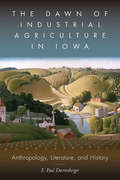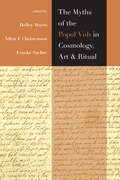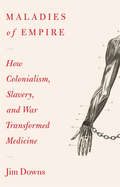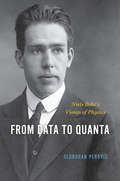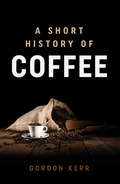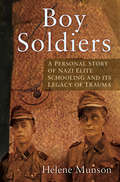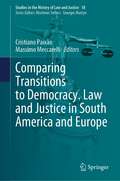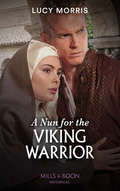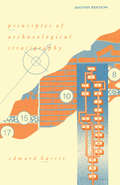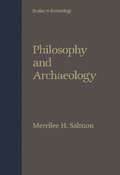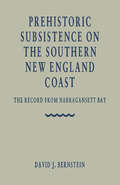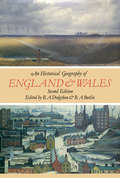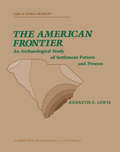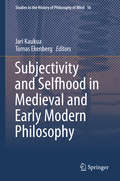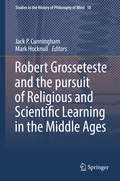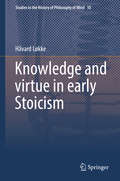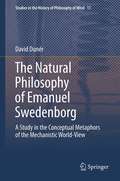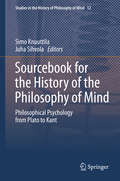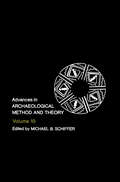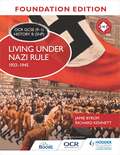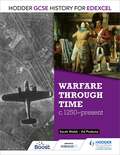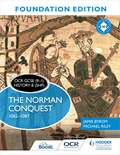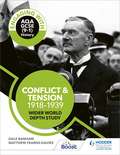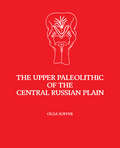- Table View
- List View
The Dawn of Industrial Agriculture in Iowa: Anthropology, Literature, and History
by E. Paul DurrenbergerIn The Dawn of Industrial Agriculture in Iowa E. Paul Durrenberger recounts the transformation of Iowa’s family farms into today’s agricultural industry through the lens of the lives and writings of Iowa novelist Paul Corey and poet Ruth Lechlitner. This anthropological biography analyzes Corey’s fiction, Lechlitner’s poetry, and their professional and personal correspondence to offer a new perspective on an era (1925–1947) that saw the collapse and remaking of capitalism in the United States, the rise of communism in the Soviet Union, the rise and defeat of fascism around the world, and the creation of a continuous warfare state in America. Durrenberger tells the story that Corey aimed to record and preserve of the industrialization of Iowa’s agriculture and the death of its family farms. He analyzes Corey’s regionalist focus on Iowa farming and regionalism’s contemporaneous association in Europe with rising fascism. He explores Corey’s adoption of naturalism, evident in his resistance to heroes and villains, to plot structure and resolution, and to moral judgment, as well as his ethnographic tendency to focus on groups rather than individuals. An unusual and wide-ranging study, The Dawn of Industrial Agriculture in Iowa offers important insight into the relationships among fiction, individual lives, and anthropological practice, as well as into a pivotal period in American history.
The Myths of the Popol Vuh in Cosmology, Art, and Ritual
by Holley Moyes Allen J. Christenson Frauke SachseThis volume offers an integrated and comparative approach to the Popol Vuh, analyzing its myths to elucidate the ancient Maya past while using multiple lines of evidence to shed light on the text. Combining interpretations of the myths with analyses of archaeological, iconographic, epigraphic, ethnohistoric, ethnographic, and literary resources, the work demonstrates how Popol Vuh mythologies contribute to the analysis and interpretation of the ancient Maya past. The chapters are grouped into four sections. The first section interprets the Highland Maya worldview through examination of the text, analyzing interdependence between deities and human beings as well as the textual and cosmological coherence of the Popol Vuh as a source. The second section analyzes the Precolumbian Maya archaeological record as it relates to the myths of the Popol Vuh, providing new interpretations of the use of space, architecture, burials, artifacts, and human remains found in Classic Maya caves. The third explores ancient Maya iconographic motifs, including those found in Classic Maya ceramic art; the nature of predatory birds; and the Hero Twins’ deeds in the Popol Vuh. The final chapters address mythological continuities and change, reexamining past methodological approaches using the Popol Vuh as a resource for the interpretation of Classic Maya iconography and ancient Maya religion and mythology, connecting the myths of the Popol Vuh to iconography from Preclassic Izapa, and demonstrating how narratives from the Popol Vuh can illuminate mythologies from other parts of Mesoamerica. The Myths of the Popol Vuh in Cosmology, Art, and Ritual is the first volume to bring together multiple perspectives and original interpretations of the Popol Vuh myths. It will be of interest not only to Mesoamericanists but also to art historians, archaeologists, ethnohistorians, iconographers, linguists, anthropologists, and scholars working in ritual studies, the history of religion, historic and Precolumbian literature and historic linguistics. Contributors: Jaime J. Awe, Karen Bassie-Sweet, Oswaldo Chinchilla Mazariegos, Michael D. Coe, Iyaxel Cojtí Ren, Héctor Escobedo, Thomas H. Guderjan, Julia Guernsey, Christophe Helmke, Nicholas A. Hopkins, Barbara MacLeod, Jesper Nielsen, Colin Snider, Karl A. Taube
Maladies of Empire: How Colonialism, Slavery, and War Transformed Medicine
by Jim DownsA sweeping global history that looks beyond European urban centers to show how slavery, colonialism, and war propelled the development of modern medicine. Most stories of medical progress come with ready-made heroes. John Snow traced the origins of London’s 1854 cholera outbreak to a water pump, leading to the birth of epidemiology. Florence Nightingale’s contributions to the care of soldiers in the Crimean War revolutionized medical hygiene, transforming hospitals from crucibles of infection to sanctuaries of recuperation. Yet histories of individual innovators ignore many key sources of medical knowledge, especially when it comes to the science of infectious disease. Reexamining the foundations of modern medicine, Jim Downs shows that the study of infectious disease depended crucially on the unrecognized contributions of nonconsenting subjects—conscripted soldiers, enslaved people, and subjects of empire. Plantations, slave ships, and battlefields were the laboratories in which physicians came to understand the spread of disease. Military doctors learned about the importance of air quality by monitoring Africans confined to the bottom of slave ships. Statisticians charted cholera outbreaks by surveilling Muslims in British-dominated territories returning from their annual pilgrimage. The field hospitals of the Crimean War and the US Civil War were carefully observed experiments in disease transmission. The scientific knowledge derived from discarding and exploiting human life is now the basis of our ability to protect humanity from epidemics. Boldly argued and eye-opening, Maladies of Empire gives a full account of the true price of medical progress.
From Data to Quanta: Niels Bohr’s Vision of Physics
by Slobodan PerovicThe first comprehensive philosophical and historical account of the experimental foundations of Niels Bohr’s practice of physics. Niels Bohr was a central figure in quantum physics, well known for his work on atomic structure and his contributions to the Copenhagen interpretation of quantum mechanics. In this book, philosopher of science Slobodan Perović explores the way Bohr practiced and understood physics, and analyzes its implications for our understanding of modern science. Perović develops a novel approach to Bohr’s understanding of physics and his method of inquiry, presenting an exploratory symbiosis of historical and philosophical analysis that uncovers the key aspects of Bohr’s philosophical vision of physics within a given historical context. To better understand the methods that produced Bohr’s breakthrough results in quantum phenomena, Perović clarifies the nature of Bohr’s engagement with the experimental side of physics and lays out the basic distinctions and concepts that characterize his approach. Rich and insightful, Perović’s take on the early history of quantum mechanics and its methodological ramifications sheds vital new light on one of the key figures of modern physics.
A Short History of Coffee
by Gordon KerrHaving conquered the world's taste buds and established itself as a staple in our daily lives, coffee has mirrored the moods and movements of society for centuries - yet, how much do we know about its history?In his riveting new book, A Short History of Coffee, Gordon Kerr investigates the fascinating history behind the global obsession with coffee, from its Ethiopian origins, the legends, myths, geographical locations and somewhat eccentric characters that have helped make it the staple that it is today.Proliferating high streets, towns and cities across Europe, coffee has become increasingly popular in recent years, and has succeeded in creating new and exciting hubs of commerce, news and debate, where deals could be done and revolution could be incited. Yet, despite coffee's very modern role, its origins stretch back to the days of intrepid travellers and merchants, who told tales of this new and exotic beverage that uplifted and enlivened the drinker.Following the growth in popularity through to the 21st century explosion of coffee shop culture, A Short History of Coffee lifts the Styrofoam lid on both the business of coffee, as well as the pleasures that it brings its drinkers. Gordon Kerr masterfully balances an exploration of the history of this iconic beverage, whilst also delving into the frothy brew of business, politics, and money that accompanies it.Praise for Gordon Kerr'Informative, fascinating and extremely well-researched...Gordon Kerr's book is a mini masterpiece' - Rob Minshull, ABC Brisbane on A Short History of the Vietnam War'Factual and even-handed, Kerr presents a fair-minded introduction of basic Chinese history' - Booklist on A Short History of China'Thoroughly rewarding' - Travelmag on A Short History of the Middle East
Boy Soldiers: A Personal Story of Nazi Elite Schooling and its Legacy of Trauma
by Helene MunsonAt the end of the Second World War, hundreds of thousands of German children were sent to the front lines in the largest mobilisation of underage combatants by any country before or since. Hans Dunker was just one of these children. Identified as extremely gifted aged 9, he left his home in South America in 1937 in pursuit of a ‘proper’ education in Nazi Germany. Instead, he and his schoolfriends, lacking adequate training, ammunition and rations, were sent to the Eastern Front when the war was already lost in the spring of 1945. Using her father’s diary and other documents, Helene Munson traces Hans’ journey from a student at Feldafing School to a soldier fighting in Zawada, a village in present-day Czech Republic. What is revealed is an education system so inhumane that until recently, post-war Germany worked hard to keep it a secret. This is Hans’ story, but also the story of a whole generation of German children who silently carried the shame of what they suffered into old age. It reveals the true cost and long-lasting impacts of such experiences – not just to them, but also to their families and future generations, a warning to a world where thousands of child soldiers are still sent to fight in armed conflicts.
Comparing Transitions to Democracy. Law and Justice in South America and Europe (Studies in the History of Law and Justice #18)
by Cristiano Paixão Massimo MeccarelliThis present book examines some of the key features of the interplay between legal history, authoritarian rule and political transitions in Brazil and other countries from the end of 20th Century until today. This book casts light on these aspects of the role of law and legal actors/institutions. In the context of transition from authoritarian rule to democratic state, Brazil has produced a significant literature on the challenges and shortcomings of the transition, but little attention has been given to the role of law and legal actors/institutions. Different approaches focus on the legal mechanisms, discourses and practices used by the military regime and by the players involved in the political transition process in Brazil. A comparative perspective that takes into account different political transitions – and their legal consequences – in Europe and Latin America complements the analysis. Part 1 (4 essays) discusses some of the central issues of political transition and legal history in contemporary Brazil, focusing on the time of the transition (and its effects on transitional justice) with different perspectives, from racial and gender issues to constitutional reform and police repression. Part 2 (3 essays) brings the comparative studies on South American experiences. Part 3 (4 essays) analyses different cases of transition to democracy in Chile, Portugal, Spain and Italy. Part 4 (3 essays) proposes a historiographical and methodological approach, considering the politics of time involved in the interplay between political transitions and legal history.
Principles of Archaeological Stratigraphy
by Edward C. HarrisThis book is the only text devoted entirely to archaeological stratigraphy, a subject of fundamental importance to most studies in archaeology. The first edition appeared in 1979 as a result of the invention, by the author, of the Harris Matrix--a method for analyzing and presenting the stratigraphic sequences of archaeological sites. The method is now widely used in archaeology all over the world. The opening chapters of this edition discuss the historical development of the ideas of archaeological stratigraphy. The central chapters examine the laws and basic concepts of the subject, and the last few chapters look at methods of recording stratification, constructing stratigraphic sequences, and the analysis of stratification and artifacts. The final chapter, which is followed by a glossary of stratigraphic terms, gives an outline of a modern system for recording stratification on archaeological sites. This book is written in a simple style suitable for the student or amateur. The radical ideas set out should also give the professional archaeologist food for thought.Covers a basic principle of all archaeological excavationsProvides a data description and analysis tool for all such digs, which is now widely accepted and usedGives extra information
Prehistoric Subsistence on the Southern New England Coast: The Records from Narragansett Bay
by David J. BernsteinPrehistoric Subsistence on the Southern New England Coast examines long-term trends in prehistoric subsistence in the Narragensett Bay region of Southern New England. The results suggest that, unlike other areas of Eastern north America, specialized agriculutral economies did not develop in this region prior to European contact. The book is accessible to both the general reader as well as scholars and students interested in consulting the original data for their own research and analysis.* * Incorporates original research in palynology and geomorphology in to an archaeological study* Presents a study of modern shellfish growth that is used to interpret the archaeological remains found at Greenwich Cove* Uses numerous animal species to determine site seasonality
Historical Geography of England and Wales
by Robert A. Dodgshon Robin A. ButlinThis text has been designed to cover all aspects and phases of the historical geography of England and Wales in a single volume. In its substantially revised and enlarged form, the treatment of standard themes has been completely re-written to take account of recent work and shifts in viewpoint while its overall coverage has been extended to embrace newer themes like symbolic landscapes and the geography of the inter-war period. Its comprehensiveness and freshness of approach ensure its continuing value and success as a text.Breadth of coverage from prehistory to 1939Uses a range of data sources and approachesWell illustrated with particular emphasis on key themesMajor revision of 1st edition with much wider range of topics
The American Frontier: An Archaeological Study of Settlement Pattern and Process
by Kenneth E. LewisThe American Frontier: An Archaeological Study of Settlement Pattern and Process focuses on general rules or laws for the evolution of all agrarian frontiers, emphasizing those that are expanding. A variety of frontiers is also discussed in addition to the agrarian type to pinpoint similarities and differences. Organized into 11 chapters, this book first elucidates the processes of frontier colonization, and then describes the frontier model employed for the interpretation of documentary and material evidence for the examination of the development of South Carolina frontier. Some chapters then focus on the examination of South Carolina's colonial past in terms of the model to determine its degree of conformity with the latter and to set the stage for the archaeological study; the development of archaeological hypotheses; and a consideration of the material record. Other types of frontiers are characterized by separate developmental processes, and several of these are discussed in Chapter 10 as avenues for further research. This book will be valuable to scholars in several fields, including history, geography, and anthropology. Historical archaeologists will find it especially useful in designing research in former colonial areas and in modeling additional kinds of frontier change.
Subjectivity and Selfhood in Medieval and Early Modern Philosophy (Studies in the History of Philosophy of Mind #16)
by Jari Kaukua Tomas EkenbergThis book is a collection of studies on topics related to subjectivity and selfhood in medieval and early modern philosophy. The individual contributions approach the theme from a number of angles varying from cognitive and moral psychology to metaphysics and epistemology. Instead of a complete overview on the historical period, the book provides detailed glimpses into some of the most important figures of the period, such as Augustine, Avicenna, Aquinas, Descartes, Spinoza, Leibniz and Hume. The questions addressed include the ethical problems of the location of one's true self and the proper distribution of labour between desire, passion and reason, and the psychological tasks of accounting for subjective experience and self-knowledge and determining different types of self-awareness.
Robert Grosseteste and the pursuit of Religious and Scientific Learning in the Middle Ages (Studies in the History of Philosophy of Mind #18)
by Jack P. Cunningham Mark HocknullThis book explores a wide range of topics relating to scientific and religious learning in the work of Bishop Robert Grosseteste (c. 1168–1253) and does so from various perspectives, including those of a twenty-first century scientists, historians, and philosophers as well as several medievalists. In particular, it aims to contribute to our understanding of where to place Grosseteste in the history of science (against the background of the famous claim by A.C. Crombie that Grosseteste introduced what we now might call “experimental science”) and to demonstrate that the polymathic world of the medieval scholar, who recognized no dichotomy in the pursuit of scientific and philosophical/theological understanding, has much to teach those of us in the modern world who wrestle with the vexed question of the relationship between science and religion. The book comprises an edited selection of the best papers presented at the 3rd International Robert Grosseteste Conference (2014) on the theme of scientific and religious learning, especially in the work of Grosseteste.
Knowledge and virtue in early Stoicism (Studies in the History of Philosophy of Mind #10)
by Håvard LøkkeThis book is about the epistemological views and arguments of the early Stoics. It discusses such questions as: How is knowledge possible, and what is it? How do we perceive things and acquire notions of them? Should we rely on arguments? How do we come to make so many mistakes?The author tries to give a comprehensive and conservative account of Stoic epistemology as a whole as it was developed by Chrysippus. He emphasizes how the epistemological views of the Stoics are interrelated among themselves and with views from Stoic physics and logic.There are a number of Stoic views and arguments that we will never know about. But there are passages on Stoic epistemology in Sextus Empiricus, Galen, Plutarch, Cicero, and a few others authors. The book is like a big jigsaw puzzle of these scattered pieces of evidence.
The Natural philosophy of Emanuel Swedenborg: A Study in the Conceptual Metaphors of the Mechanistic World-View (Studies in the History of Philosophy of Mind #11)
by David DunerAlthough Emanuel Swedenborg (1688–1772) is commonly known for his spiritual philosophy, his early career was focused unnatural science. During this period, Swedenborg thought of the world was like a gigantic machine, following the laws of mechanics and geometry. This volume analyzes this mechanistic worldview from the cognitive perspective, by means of a study of the metaphors in Swedenborg’s texts. The author argues that these conceptual metaphors are vital skills of the creative mind and scientific thinking, used to create visual analogies and abstract ideas. This means that Swedenborg’s mechanistic and geometrical worldview, allowed him to perceive the world as mechanical and geometrical. Swedenborg thought ”with” books and pens. The reading gave him associations and clues, forced him to interpret, and gave him material for his intellectual development.
Sourcebook for the History of the Philosophy of Mind: Philosophical Psychology from Plato to Kant (Studies in the History of Philosophy of Mind #12)
by Juha Sihvola Simo KnuuttilaFresh translations of key texts, exhaustive coverage from Plato to Kant, and detailed commentary by expert scholars of philosophy add up to make this sourcebook the first and most comprehensive account of the history of the philosophy of mind. Published at a time when the philosophy of mind and philosophical psychology are high-profile domains in current research, the volume will inform our understanding of philosophical questions by shedding light on the origins of core conceptual assumptions often arrived at before the instauration of psychology as a recognized subject in its own right. The chapters closely follow historical developments in our understanding of the mind, with sections dedicated to ancient, medieval Latin and Arabic, and early modern periods of development. The volume’s structural clarity enables readers to trace the entire progression of philosophical understanding on specific topics related to the mind, such as the nature of perception. Doing so reveals the fascinating contrasts between current and historical approaches. In addition to its all-inclusive source material, the volume provides subtle expert commentary that includes critical introductions to each thematic section as well as detailed engagement with the central texts. A voluminous bibliography includes hundreds of primary and secondary sources. The sheer scale of this new publication sheds light on the progression, and discontinuities, in our study of the philosophy of mind, and represents a major new sourcebook in a field of extreme importance to our understanding of humanity as a whole.
Advances in Archaeological Method and Theory (Advances in Archaeological Method and Theory #Volume 10)
by Michael B. SchifferAdvances in Archaeological Method and Theory
OCR GCSE (9–1) History B (SHP) Foundation Edition: Living under Nazi Rule 1933–1945
by Jamie Byrom Richard KennettExam board: OCR (Specification B, SHP)Level: GCSE (9-1)Subject: HistoryFirst teaching: September 2016First exams: Summer 2018An OCR endorsed textbook.Help more students to access the content for OCR GCSE History B (SHP) with this Foundation Edition, designed to work alongside the mainstream textbook for effective co-teaching in the same class.Covering The Making of America 1789-1900, this book:> Follows the same structure and page numbers as the mainstream textbook so that students of all abilities can explore the same enquiries> Simplifies and reduces the text on each page, using carefully-controlled vocabulary and clear explanations of key terms> Focuses on the key points that students need to understand and includes new content summaries at the end of each enquiry to reinforce learning> Offers full support for the student tasks, using a wide range of scaffolding to make the tasks accessible and achievable> Provides specific assessment guidance and develops the historical thinking skills required for success at GCSE
Hodder GCSE History for Edexcel: Warfare through time, c1250–present
by Sarah Webb Ed PodestaExam Board: Pearson EdexcelLevel: GCSESubject: HistoryFirst teaching: September 2016First exams: June 2018Endorsed for EdexcelEnable students to achieve their full potential while ensuring pace, enjoyment and motivation with this popular series from the leading History publisher for secondary schools.> Blends in-depth coverage of topics with activities and strategies to help students to acquire, retain and revise core subject knowledge > Uses an exciting mix of clear narrative, visual stimulus materials and a rich collection of contemporary sources to capture students' interest> Helps students to maximise their grade potential and develop their exam skills through structured guidance on answering every question type successfully> Builds on our experience publishing popular GCSE History resources, providing you with accurate, authoritative content written by experienced teachers who understand the content and assessment requirementsWarfare through time, c.1250-present covers both the thematic study 'Warfare and British society, c.1250-present' and the study of the historic environment 'London and the Second World War, 1939-45.'
OCR GCSE (9–1) History B (SHP) Foundation Edition: The Norman Conquest 1065–1087
by Jamie Byrom Michael RileyExam board: OCR (Specification B, SHP)Level: GCSE (9-1)Subject: HistoryFirst teaching: September 2016First exams: Summer 2018An OCR endorsed textbook.Help more students to access the content for OCR GCSE History B (SHP) with this Foundation Edition, designed to work alongside the mainstream textbook for effective co-teaching in the same class.Covering The Making of America 1789-1900, this book:> Follows the same structure and page numbers as the mainstream textbook so that students of all abilities can explore the same enquiries> Simplifies and reduces the text on each page, using carefully-controlled vocabulary and clear explanations of key terms> Focuses on the key points that students need to understand and includes new content summaries at the end of each enquiry to reinforce learning> Offers full support for the student tasks, using a wide range of scaffolding to make the tasks accessible and achievable> Provides specific assessment guidance and develops the historical thinking skills required for success at GCSE
Engaging with AQA GCSE (9–1) History: Elizabethan England, c1568–1603 British depth study
by Dale BanhamExam board: AQALevel: GCSESubject: HistoryFirst teaching: September 2016First exams: Summer 2018Make AQA GCSE History more accessible, enjoyable and manageable.Based on his own experience of teaching the specification, renowned author Dale Banham knows how to cover the content with the right pace and depth, while also equipping students with the knowledge and 'complex thinking' skills required for exam success.Using the latest research on memory and visible learning, this textbook will help to raise attainment for students of all abilities.> Engage students with accessible routes into challenging topics. The text is broken down into bullet points and boxes, while stories about interesting people start each chapter, providing a memorable 'hook' for revision> Encourage students to take responsibility for their learning. Tasks are structured around five 'steps to success', teaching students how to Research, Summarise, Connect, Apply and Review the content> Make learning stick. Techniques such as interleaving, retrieval practice, dual coding and spaced practice help students to remember everything and use their knowledge effectively in the exams> Build top-grade skills. The higher-order thinking skills required to construct complex arguments and reach the upper levels of the AQA mark schemes are carefully modelled, with step-by-step advice> Improve exam results. Practice questions, revision tips and guidance based on the examiners' reports are embedded throughout the book, alongside purposeful homework activities for each week> Cover the content in one term. A double-page spread for each lesson and a clear pathway through each unit focuses students on what they really need to know, leaving one final term for revisionThe five-term plan is provided FREE online at hoddereducation.co.uk/engaging, along with editable resources that support the tasks in the textbooks and guidance on using homework effectively.
Engaging with AQA GCSE (9–1) History: Conflict and tension, 1918–1939 Wider world depth study
by Dale Banham Matthew Fearns-DaviesExam board: AQALevel: GCSESubject: HistoryFirst teaching: September 2016First exams: Summer 2018Make AQA GCSE History more accessible, enjoyable and manageable.Based on his own experience of teaching the specification, renowned author Dale Banham knows how to cover the content with the right pace and depth, while also equipping students with the knowledge and 'complex thinking' skills required for exam success.Using the latest research on memory and visible learning, this textbook will help to raise attainment for students of all abilities.> Engage students with accessible routes into challenging topics. The text is broken down into bullet points and boxes, while stories about interesting people start each chapter, providing a memorable 'hook' for revision> Encourage students to take responsibility for their learning. Tasks are structured around five 'steps to success', teaching students how to Research, Summarise, Connect, Apply and Review the content> Make learning stick. Techniques such as interleaving, retrieval practice, dual coding and spaced practice help students to remember everything and use their knowledge effectively in the exams> Build top-grade skills. The higher-order thinking skills required to construct complex arguments and reach the upper levels of the AQA mark schemes are carefully modelled, with step-by-step advice> Improve exam results. Practice questions, revision tips and guidance based on the examiners' reports are embedded throughout the book, alongside purposeful homework activities for each week> Cover the content in one term. A double-page spread for each lesson and a clear pathway through each unit focuses students on what they really need to know, leaving one final term for revisionThe five-term plan is provided FREE online at hoddereducation.co.uk/engaging, along with editable resources that support the tasks in the textbooks and guidance on using homework effectively.
The Upper Paleolithic of the Central Russian Plain
by Olga SofferThe Upper Paleolithic of the Central Russian Plain examines the hunter-gatherer adaptations on the Upper Paleolithic central Russian Plain. The book offers both a culture history for the area and an explanation for the changes in human adaptation. It presents what has been found at 29 major Upper Paleolithic sites occupied over a period of some 14,000 years. The book presents details of the archaeological inventories and assemblages found at the 29 sites, together with the geography and geology of the study area. It then uses environmental data to model environmental conditions and resource distribution during the various periods of human occupation, as well as to predict optimal strategies for exploiting available resources. Subsequent chapters present the relative and chronometric dating schemes. The book also elucidates the man-land relationships, ensuing subsistence strategies, settlement types present in the archaeological record, settlement systems, and sociopolitical behavior. The text will be significant to archaeologists, paleoecologists, and anthropologists interested in hunter-gatherers and late Pleistocene adaptations.
